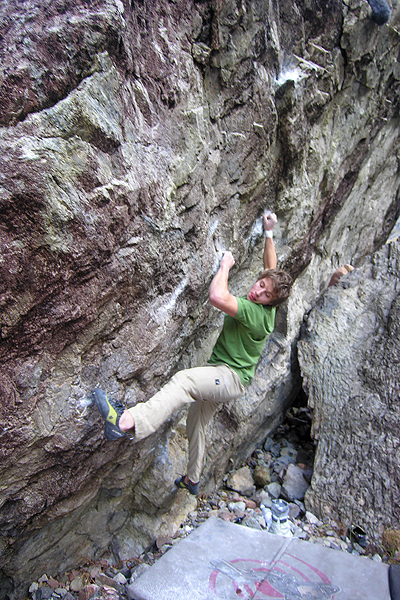We had a perfect day in the Lost Valley filming for 'Elements', the new Bouldering in Scotland movie from Pete Murray, accompanied by a psyched and impressed Ben Litster. We thought he would appreciate the alpine feel of the place, with the snow runnels and cornices on the Bidian massif and the tranquil solitude of the Lost Valley itself. We were filming the 'Fire' element, which involved carrying a sack of wood up to the valley along with the cameras, which once lit with a box of firelighters warmed our numb toes in between problems and provided a gentle crackling accompaniment to the power yells! Ben managed the sit start to Diesel Canary at about Font 7b+, the last move of the stand-up proving to be the redpoint crux, infuriatingly it proved for Watson.
Video of the classic 'Helipad' on the Leaning Bloc:
